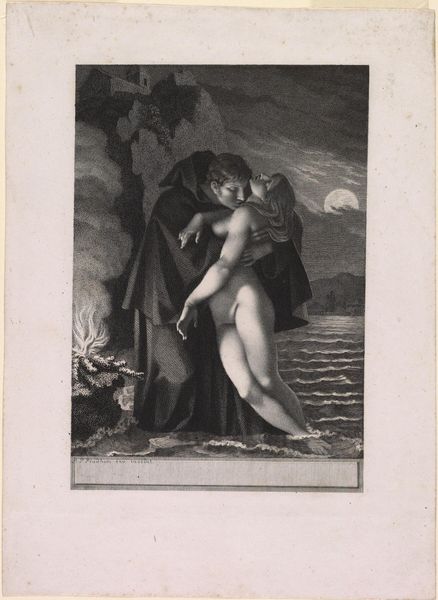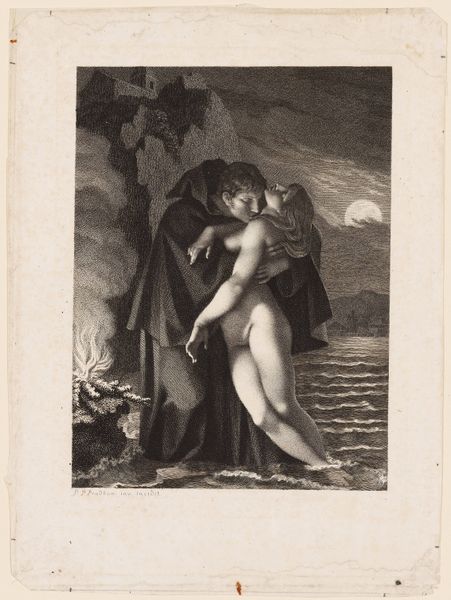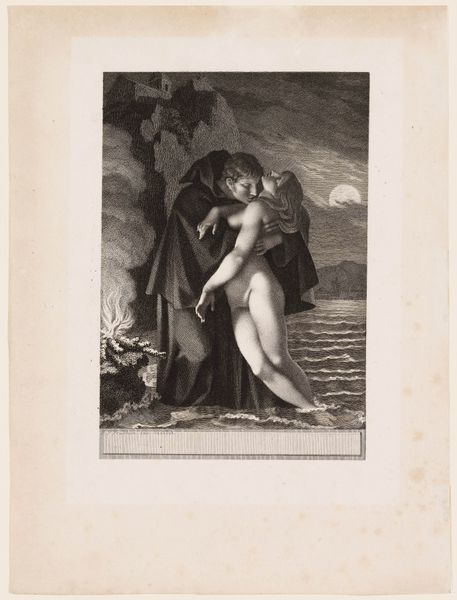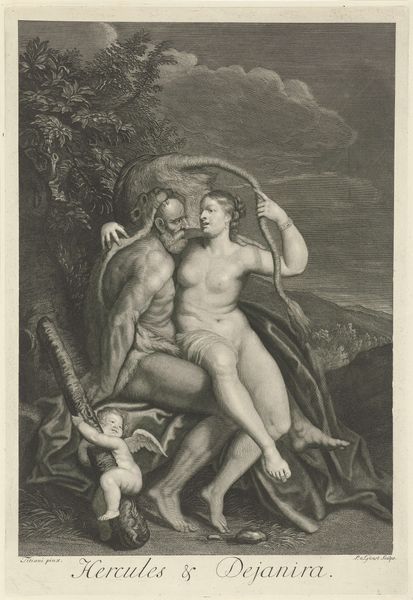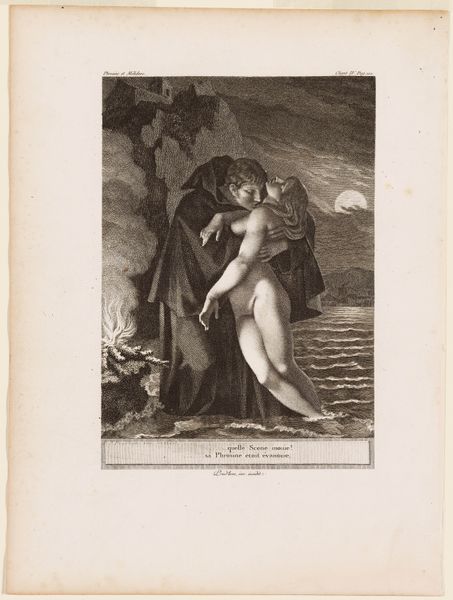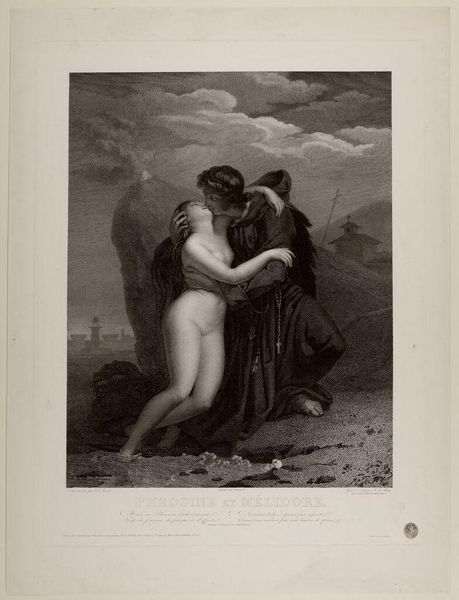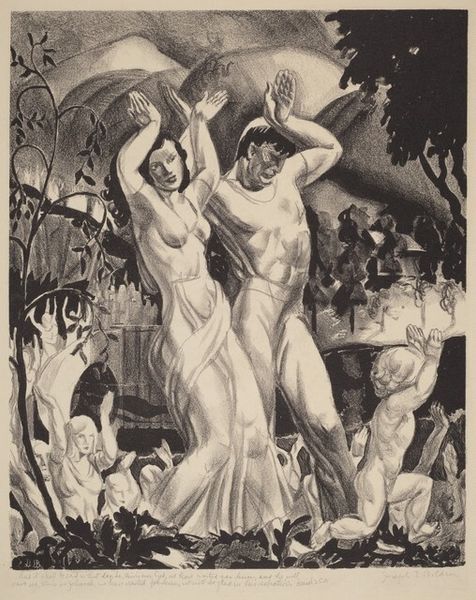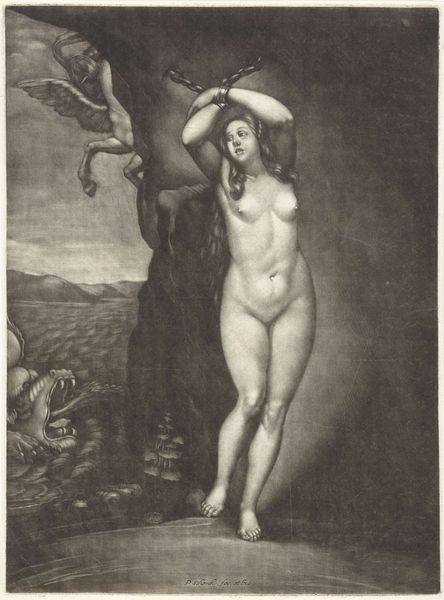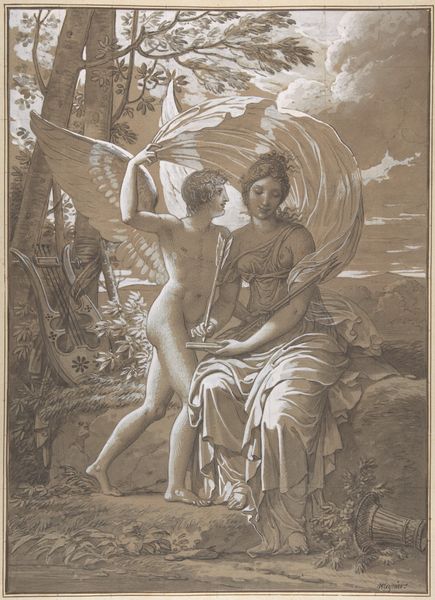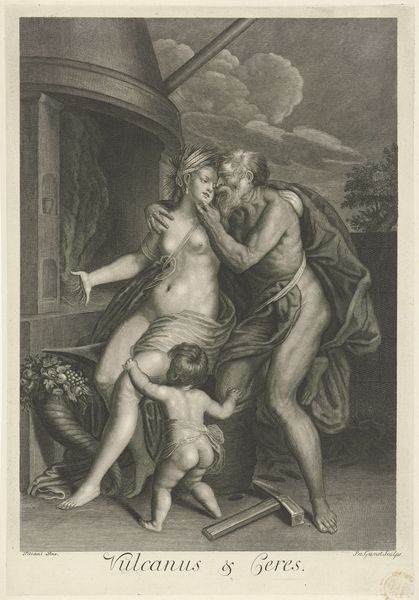
drawing, print, etching, paper
#
drawing
#
neoclacissism
#
narrative-art
# print
#
etching
#
landscape
#
figuration
#
paper
#
romanticism
#
black and white
#
france
#
19th century
#
history-painting
#
nude
Dimensions: 212 × 145 mm (image); 343 × 251 mm (plate); 292 × 213 mm (sheet)
Copyright: Public Domain
Curator: Pierre-Paul Prud'hon's etching, "Phrosine and Mélidore," from 1797, now at the Art Institute of Chicago, depicts a dramatic encounter in a moonlit landscape. Editor: Immediately striking is the contrast—the raw vulnerability of the woman against the dark, almost suffocating presence of the cloaked figure. The entire scene exudes a palpable tension and disquiet. Curator: The interplay of light and shadow is essential. Observe how Prud'hon uses cross-hatching to model the forms, particularly the woman’s body, rendering it with a soft, almost dreamlike quality that contrasts starkly with the harsh lines defining the figure’s robe. Editor: The characters' story, drawn from Greek mythology, reveals why Prud'hon employed such symbols: The story revolves around a tale of abduction and forbidden love. The heavy cloak, of course, cloaks not just his identity, but possibly sinister motives; the bonfire possibly signifies transformation and purification rites and the moon speaks about mysteries. Curator: Yes, one might say Prud'hon has meticulously created this landscape of psychological complexity using only lines and tones. Consider the deliberate asymmetry: the figures are off-center, the horizon isn't level, thus it adds to a sensation of unease that reflects their turbulent emotions. Editor: Note how the water and even the lunar orb seem to possess the characteristics of mourning—there appears to be darkness looming beneath it, adding layers of emotional symbolism. Also, let's think about the conventions around idealized nude figures in that era and what it could express within the cultural framework that audiences were more accustomed to viewing them within? Curator: I would note too the careful consideration of how the two figures are rendered - that the cloak doesn't overwhelm the figures entirely so the narrative thread is followed - note how there is that moment of tension but he maintains clarity with regard to spatial relationships? The overall composition is a statement in itself! Editor: Indeed. What initially seemed like just another Romantic landscape now reveals a deep well of meaning. This piece demonstrates how universal stories, with cultural symbolism attached to each of them can convey enduring ideas about desire and vulnerability. Curator: Ultimately, Prud'hon transforms simple ink and paper into a landscape reflecting turbulent emotion; a masterful example of Neoclassical composition imbued with Romantic sensibility.
Comments
No comments
Be the first to comment and join the conversation on the ultimate creative platform.
